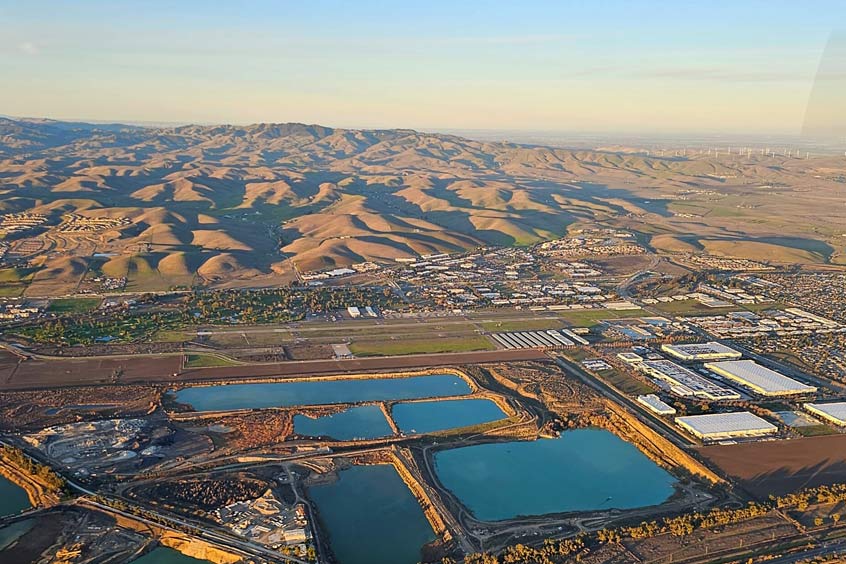ACE 2026 - The home of global charter.
 The bimonthly news publication for aviation professionals.
The bimonthly news publication for aviation professionals.

ZeroAvia has been awarded $3.25 million in funding by the California Energy Commission (CEC) to develop a first-of-a-kind mobile liquid hydrogen (LH2) refuelling truck for heavy-duty applications such as aviation and maritime. Funding for the project comes from the Gas R&D Program administered by the CEC and authorised by the California Public Utilities Commission.
Working at Livermore Municipal airport, ZeroAvia will begin work this month to design, build and demonstrate a 10,000 litre mobile LH2 refueller with sufficient flow rates to refuel in a similar time as traditional jet fuel refills. Hitting this ambitious target will support hydrogen-powered aircraft in meeting tight turnaround windows, especially in regional transport.
The LH2 refueller will also be designed to improve on existing energy efficiency in LH2 applications, including reducing hydrogen boil-off to less than 0.1 per cent per day.
ZeroAvia is developing hydrogen fuel cell propulsion as a solution to tackling the climate impact from aviation. The company plans to support passenger and cargo flights by the end of 2025 with its first hydrogen-electric engines (ZA600) for nine-19 seat aircraft using gaseous hydrogen storage.
To scale hydrogen engines to larger commercial aircraft and to enable longer ranges across all aircraft sizes, cryogenic liquid hydrogen must be used to reduce the size and weight of the fuel storage systems. ZeroAvia is already developing its larger ZA2000 engine family, with the first high power ground tests of the fully integrated electric propulsion system conducted earlier this year. These larger aircraft, such as the Dash-8-400 76-seat aircraft ZeroAvia is working on with Alaska Airlines and other partners, will require up to one ton of LH2 storage on board to support up to 700nm range, with target launch in 2027.
The CEC-funded project advances the commercial viability of liquid hydrogen fuelled aircraft by supporting advancements in energy performance, cost efficiency and refuelling speed. The technology also has potential application in other segments of the transportation sector, including road freight and maritime.
Val Miftakhov, ZeroAvia CEO, says: "Given the gravity of the climate emergency, the rapid acceleration of clean engine technology using fuel cells must be met with optimised refuelling technologies and infrastructure to ensure speedy adoption. This mobile LH2 refueller project is therefore of essential importance to ZeroAvia, the wider aviation industry and anybody working to clean up heavy duty transportation."
Jonah Steinbuck, director of the energy research and development division at the CEC, adds: "ZeroAvia's liquid hydrogen refueller project supports greenhouse gas emission reductions in aviation, which is particularly difficult to decarbonise, and from the broader transport sector, the largest source of greenhouse gas emissions in California. This technology also holds promise in creating new economic opportunities in California and beyond."
Pete Sandhu, CEO of Livermore Municipal airport FBO Five Rivers Aviation, says: "Livermore is thrilled to attract the cutting-edge research and development that ZeroAvia is engaged in, leveraging our proximity to two national labs, a well-educated workforce and a capable airport. By pioneering clean and quiet aviation technologies, ZeroAvia is making the aviation industry more compatible with, and valuable to, our surrounding communities. We're delighted that ZeroAvia's CEC project will be developed and demonstrated at Livermore to showcase airports as multi-modal hubs for clean and quiet hydrogen-fuelled transport."
Starting operations at Livermore means that ZeroAvia has operations at two California airports; vital experience as it looks to certify its first zero-emission engines. With a track record of being at the vanguard of adopting renewable energy infrastructure and green transportation technology, and with a high density of regional airports, California represents a good potential market for adoption of the first hydrogen-electric flights.